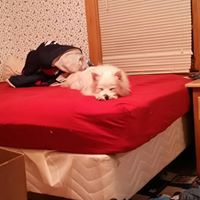Michael Lee Ott
age ~52
from Brainerd, MN
- Also known as:
-
- Michael L Ott
- Mike L Ott
- Micheal Ott
- Michael Lott
- Phone and address:
-
16315 County Road 22, Brainerd, MN 56401
2188286393
Michael Ott Phones & Addresses
- 16315 County Road 22, Brainerd, MN 56401 • 2188286393
- 1213 Rosewood St, Brainerd, MN 56401
- 1478 Wonderland Park Rd NE, Brainerd, MN 56401
- Long Lake, MN
- Minneapolis, MN
- Le Sueur, MN
- Wellston, OH
Lawyers & Attorneys

Michael Ott - Lawyer
view sourceISLN:
920321414
Isbn (Books And Publications)

Das Ungeschriebene Gesetz: Ehre Und Geschlechterdifferenz in Der Deutschen Literatur Um 1800
view sourceAuthor
Michael Ott
ISBN #
3793092615

The Future of Religion: Toward a Reconciled Society
view sourceAuthor
Michael R. Ott
ISBN #
9004160140
Name / Title
Company / Classification
Phones & Addresses
Director
Childrens Health Care Services Inc
Services-Misc
Services-Misc
2525 Chicago Ave, Minneapolis, MN 55404
Director
Children's Hospitals and Clinics of Minnesota
Specialty Outpatient Clinic Medical Doctor's Office · Specialty Hospital · Medical Doctor's Office · Specialty Hospital Medical Doctor's Office · Pediatric Allergist · Pediatric Hematologist · Pediatric Oncologist · Pediatric Endocrinologist
Specialty Outpatient Clinic Medical Doctor's Office · Specialty Hospital · Medical Doctor's Office · Specialty Hospital Medical Doctor's Office · Pediatric Allergist · Pediatric Hematologist · Pediatric Oncologist · Pediatric Endocrinologist
2425 Chicago Ave, Minneapolis, MN 55404
2525 Chicago Ave, Minneapolis, MN 55404
2545 Chicago Ave, Minneapolis, MN 55404
2530 Chicago Ave S, Minneapolis, MN 55404
6128136125, 6128136100, 6128633226, 6128136000
2525 Chicago Ave, Minneapolis, MN 55404
2545 Chicago Ave, Minneapolis, MN 55404
2530 Chicago Ave S, Minneapolis, MN 55404
6128136125, 6128136100, 6128633226, 6128136000
SANDROCK PAINTING, INC
GLYNWOOD ACRES, LLC
HOBBIES GONE WILD, LLC
OTT SERVICES LLC
SANDROCK ALPHA, LLC
KOMSR, INC
Us Patents
-
Fiber Optic Cable Assembly And Method Of Making The Same
view source -
US Patent:8457461, Jun 4, 2013
-
Filed:Apr 15, 2011
-
Appl. No.:13/087807
-
Inventors:Michael James Ott - Le Sueur MN, US
-
Assignee:ADC Telecommunications, Inc. - Berwyn PA
-
International Classification:G02B 6/44
-
US Classification:385103, 385113
-
Abstract:A fiber optic cable assembly includes a main fiber optic cable and a pre-connectorized fiber optic cable assembly. Optical fibers of the main fiber optic cable are mass fusion spliced to optical fibers of the pre-connectorized fiber optic cable assembly thereby forming a mass fusion splice. The mass fusion splice is positioned within an outer jacket of the main fiber optic cable. A reinforcing member and a protective transition member are applied to make the fiber optic cable assembly. A method of making the fiber optic cable assembly is also disclosed.
-
Method Of Directly Molding Ferrule On Fiber Optic Cable
view source -
US Patent:8580162, Nov 12, 2013
-
Filed:Mar 17, 2010
-
Appl. No.:12/725626
-
Inventors:Michael James Ott - Le Sueur MN, US
Thomas P. Huegerich - Manchester Center VT, US -
Assignee:ADC Telecommunications, Inc. - Berwyn PA
-
International Classification:B29D 11/00
-
US Classification:264 125, 264 17, 264 27
-
Abstract:A method of directly molding a fiber optic ferrule on an end of a fiber optic cable is disclosed. The method preferably includes stripping a cable jacket and/or a buffer layer from optical fibers of the fiber optic cable and trimming the optical fibers with a laser thereby creating trimmed ends on the optical fibers. The optical fibers and preferably a pin assembly are held near the end of the fiber optic cable by an optical fiber and pin locator. The optical fiber and pin locator can statically or dynamically hold and position the optical fibers and pin assembly. After the optical fibers and/or the pin assembly are positioned, a fixture is attached to the trimmed ends of the optical fibers and/or the pin assembly thereby preserving their relative position to each other. After the fixture is attached, the optical fiber and pin locator is removed, and the end of the fiber optic cable with the attached fixture is placed into a mold cavity. A molding material is injected into the mold cavity thereby overmolding a substantial portion of the end of the fiber optic cable and thereby creating a molded body of the fiber optic ferrule.
-
Fiber Optic Telecommunications System
view source -
US Patent:20100209058, Aug 19, 2010
-
Filed:Jun 18, 2008
-
Appl. No.:12/663779
-
Inventors:Michael J. Ott - Le Sueur MN, US
-
International Classification:G02B 6/44
G02B 6/00
G02F 1/01 -
US Classification:385101, 385134, 385 1
-
Abstract:A communications cable includes two or more optical fibers embedded in a jacket which supports the fibers at a predetermined center-to-center distance. The jacket including at least one reference surface oriented at a predetermined angle to the reference plane. The communications cable may also include one or more electrical conductor. Apparatus is provided for preparing the ends of the optical fibers without use of a ferrule, and for transmitting multiple electrical and/or optical signals over the communications cable.
-
Fiber Optic Ferrule Assembly With Transitioning Insert
view source -
US Patent:20110103748, May 5, 2011
-
Filed:Oct 29, 2010
-
Appl. No.:12/915692
-
Inventors:Michael James Ott - Le Sueur MN, US
-
International Classification:G02B 6/36
G02B 6/26 -
US Classification:385 78, 156 91
-
Abstract:A fiber optic ferrule assembly includes a ferrule with an axial passage, an insert with an axial passage, and a hub with an axial passage. The axial passage of the ferrule includes a first diameter portion having a diameter of at least 125 microns, and the axial passage of the insert includes a second diameter portion having a diameter of at least 250 microns. The axial passage of the hub holds at least a portion of the ferrule and the insert. The fiber optic ferrule assembly terminates a fiber optic cable including an inner fiber, an outer coating around the inner fiber, and a buffer layer around the outer coating. The first diameter portion only receives the inner fiber and no outer coating, and the second diameter portion receives at least a portion of an exposed portion of the outer coating and no buffer layer. Minimal epoxy is applied around a transition area near an end of the outer coating. A method of assembling a terminated fiber optic cable is also provided.
-
Lc Connector And Method Of Assembly
view source -
US Patent:20120170896, Jul 5, 2012
-
Filed:Nov 30, 2011
-
Appl. No.:13/308209
-
Inventors:Kenneth Allen Skluzacek - Belle Plaine MN, US
Michael D. Schroeder - Webster MN, US
Michael James Ott - Chaska MN, US
Randall Wendland - New Prague MN, US
Ponharith Nhep - Savage MN, US
Steven C. Zimmel - Minneapolis MN, US -
International Classification:G02B 6/36
B23P 11/00 -
US Classification:385 81, 385 78, 29876
-
Abstract:A fiber optic connector includes a front housing having sidewalls each defining a slot and a rear insert with a pair of locking flanges extending radially away, the locking flanges configured to snap-fit into the slots, each locking flange defining a front face and a rear face, the radially outermost portion of the rear face defining an edge, the edge being the rearmost extending portion of the locking flange. Another fiber optic connector includes a front housing defining a front opening at a front end, a circular rear opening at a rear end, and an internal cavity extending therebetween. A rear insert including a generally cylindrical front portion is inserted into the front housing through the circular rear opening, the front portion defining at least one longitudinal flat configured to reduce the overall diameter of the generally cylindrical front portion configured to be inserted into the front housing.
-
Testing Of Optical Cable Using Optical Time Domain Reflectometry
view source -
US Patent:20120176607, Jul 12, 2012
-
Filed:Nov 8, 2011
-
Appl. No.:13/291779
-
Inventors:Michael James Ott - Chaska MN, US
-
International Classification:G01N 21/00
-
US Classification:356 731
-
Abstract:Methods for testing optical equipment are disclosed. One method includes connecting an optical time domain reflectometer to optical equipment to be tested, the optical equipment including at least one optical connector. The method includes injecting an optical signal onto the optical equipment from the optical time domain reflectometer, and observing an amount of reflected light at the connector. Based on the observed reflected light, an amount of loss attributable to the optical equipment is determined.
-
Fiber Optic Cassette, System, And Method
view source -
US Patent:20130089292, Apr 11, 2013
-
Filed:Oct 5, 2012
-
Appl. No.:13/645634
-
Inventors:Michael James Ott - Chaska MN, US
David Patrick Murray - Bishopston, GB -
International Classification:G02B 6/44
-
US Classification:385 78, 385 76
-
Abstract:A fiber optic cassette including a body defining a front and an opposite rear and an enclosed interior. A cable entry location is defined in the body for a cable to enter the interior of the cassette. The cable which enters at the cable entry location is attached to the cassette body and the fibers are extended into the cassette body and form terminations at connectors. The connectors are connected to adapters located at the front of the cassette. A front side of the adapters defines termination locations for cables to be connected to the fibers connected at the rear of the adapters. A cable including a jacket, a strength member, and fibers enters the cassette. The strength member is crimped to a crimp tube and is mounted to the cassette body, allowing the fibers to extend past the crimp tube into the interior of the cassette body. A strain relief boot is provided at the cable entry location.
-
Tools And Methods For Preparing A Ferrule-Less Optical Fiber Connector
view source -
US Patent:20130156379, Jun 20, 2013
-
Filed:Sep 7, 2012
-
Appl. No.:13/607086
-
Inventors:Michael James OTT - Chaska MN, US
-
Assignee:ADC TELECOMMUNICATIONS, INC. - Eden Prairie MN
-
International Classification:G02B 6/36
G02B 6/25 -
US Classification:385 76, 385134
-
Abstract:A tool set for terminating an optical fiber with a fiber optic connector includes a crimping tool and a polishing tool. The crimping tool includes a locating feature for locating a housing of the fiber optic connector, a stop for locating an end of an optical fiber relative to the housing, and at least one anvil for crimping a crimp of the fiber optic connector to secure a position of the optical fiber relative to the housing. The polishing tool includes a locating feature for locating the housing and thereby locating the end of the optical fiber and a seat for activating a compression member of the fiber optic connector thereby securing the end of the optical fiber to the polishing tool.
License Records
Michael S Ott
License #:
54.07.0094 - Active
Issued Date:
Jun 6, 2013
Expiration Date:
Jul 1, 2017
Type:
Fire Protection Individual
License #:
54.07.0094/1 - Active
Category:
Fire Alarms/Detection
Issued Date:
Jul 2, 2013
Michael D Ott
License #:
E013237 - Expired
Category:
Emergency medical services
Issued Date:
Nov 18, 2009
Expiration Date:
Dec 31, 2011
Type:
Office of State Fire Marshall
Michael Jonathan Ott
License #:
523 - Expired
Category:
Nursing
Issued Date:
Feb 1, 2000
Effective Date:
Nov 1, 2005
Expiration Date:
Oct 31, 2005
Type:
Certified Licensed Practical Nurse
Michael Jonathan Ott
License #:
17372 - Expired
Category:
Nursing
Issued Date:
Apr 16, 1999
Effective Date:
Nov 1, 2005
Expiration Date:
Oct 31, 2005
Type:
Licensed Practical Nurse
Michael R Ott
License #:
B05851000 - Expired
Issued Date:
Nov 1, 1974
Expiration Date:
Dec 31, 2004
Type:
Broker
Michael Thomas Ott
Phone:
7136663730 (Work)
License #:
21484 - Expired
Category:
Surgery
Type:
Locum Tenens
Resumes

Office Manager
view sourceWork:
Tex-Direct Drilling
Office Manager
Office Manager

Closeing Cook
view sourceWork:
Sonic Drine In
Closeing Cook
Closeing Cook

Owner
view sourceLocation:
16315 County Rd, Brainerd, MN
Industry:
Business Supplies And Equipment
Work:
Mobileaccess Networks 1988 - 2006
Director, Operations
Us Navy 1984 - 1988
Main Propulsion Assistant
Creative Consumer Products 1984 - 1988
Owner
Director, Operations
Us Navy 1984 - 1988
Main Propulsion Assistant
Creative Consumer Products 1984 - 1988
Owner
Education:
University of Illinois at Urbana - Champaign 1979 - 1983

Michael Ott
view source
Michael Ott
view source
Michael Ott
view sourceMedicine Doctors

Michael C. Ott
view sourceSpecialties:
Pulmonary Critical Care Medicine
Work:
96Th Medical Group Outpatient Clinic
307 Boatner Rd, Eglin AFB, FL 32542
8508838600 (phone), 8508838247 (fax)
307 Boatner Rd, Eglin AFB, FL 32542
8508838600 (phone), 8508838247 (fax)
Education:
Medical School
Wake Forest University School of Medicine
Graduated: 1997
Wake Forest University School of Medicine
Graduated: 1997
Procedures:
Pulmonary Function Tests
Vaccine Administration
Vaccine Administration
Conditions:
Acute Bronchitis
Bronchial Asthma
Diabetes Mellitus (DM)
Gastroesophageal Reflux Disease (GERD)
Hypothyroidism
Bronchial Asthma
Diabetes Mellitus (DM)
Gastroesophageal Reflux Disease (GERD)
Hypothyroidism
Languages:
English
Spanish
Tagalog
Spanish
Tagalog
Description:
Dr. Ott graduated from the Wake Forest University School of Medicine in 1997. He works in Eglin AFB, FL and specializes in Pulmonary Critical Care Medicine.

Michael R. Ott
view sourceSpecialties:
Emergency Medicine
Work:
Eastern Carolina Emerg PhysEast Carolina Emergency Physicians
2131 S 17 St, Wilmington, NC 28401
9104527000 (phone), 9103321072 (fax)
2131 S 17 St, Wilmington, NC 28401
9104527000 (phone), 9103321072 (fax)
Education:
Medical School
University of New England College of Osteopathic Medicine
Graduated: 1996
University of New England College of Osteopathic Medicine
Graduated: 1996
Procedures:
Vaccine Administration
Electrocardiogram (EKG or ECG)
Lumbar Puncture
Electrocardiogram (EKG or ECG)
Lumbar Puncture
Conditions:
Acute Pancreatitis
Acute Renal Failure
Anemia
Atrial Fibrillation and Atrial Flutter
Bronchial Asthma
Acute Renal Failure
Anemia
Atrial Fibrillation and Atrial Flutter
Bronchial Asthma
Languages:
English
Spanish
Spanish
Description:
Dr. Ott graduated from the University of New England College of Osteopathic Medicine in 1996. He works in Wilmington, NC and specializes in Emergency Medicine. Dr. Ott is affiliated with New Hanover Regional Medical Center and Pender Memorial Hospital.

Michael Colin Ott
view sourceSpecialties:
Colon & Rectal Surgery
Plaxo

Michael Ott
view sourceMalone Thompson

Michael Ott
view sourcewater dept at Long Beach Township
Classmates

Michael Ott
view sourceSchools:
William Allen High School Allentown PA 1981-1985
Community:
Alice Archer, Kate Hillenbrand

Michael Ott
view sourceSchools:
Clark Middle School Anchorage AK 1986-1990
Community:
Frank Mielke, Kenny Renew, Renee Pagel, Kenneth Brinck

Michael Ott
view sourceSchools:
Thomas Gregg Elementary School 15 Indianapolis IN 1995-1999
Community:
Sharyn Sowder, Albert Gruber, Jerry Burke, Christyna Eaton

Michael Ott
view sourceSchools:
Forest Knolls Elementary School Silver Spring MD 1985-1992, Turkey Foot Junior High School Ft. Mitchell KY 1993-1995

Michael Ott
view sourceSchools:
La Sierra High School Carmichael CA 1970-1974
Community:
Debra Blagg, Michael Collings, Joseph Granthem

Michael Ott
view sourceSchools:
Morristown Hamblen West High School Morristown TN 1993-1997
Community:
Steven Brown

Michael Ott
view sourceSchools:
Silverwood Elementary School Concord CA 1968-1974, Pine Hollow Middle School Concord CA 1974-1975, Project Outreach Continuation School Concord CA 1975-1976

Michael Ott
view sourceSchools:
Borland Elementary School Imlay City MI 1986-1990
Community:
Kenneth Paul, Margaret Bomarito, Jenny Viscuglia, Kelly Coenen

Michael S Ott
view source
Michael Ott
view source
Calvin Michael Ott
view source
Michael Tony Ott
view source
Michael Ott
view source
Michael Ott
view source
Douglas Michael Ott
view source
Michael Ott Thethird
view sourceGoogleplus

Michael “Distortion” Ott
Work:
Rehau - Azubi
Education:
Hans-Glas-Schule Dingolfing, Grundschule Viechtach, Staatliche Realschule Viechtach
Tagline:
Meine abgedroschenen Sprüche werden an dir kleben bleiben wie WD-40.

Michael Ott
Education:
University of Oklahoma - Energy and Finance

Michael Ott
Education:
Friedrich List Gymnasium Asperg

Michael Ott (Android Anal...
Tagline:
Creator and Author at AndroidAnalyse.com

Michael Ott

Michael Ott
Tagline:
Hinfalln - Aufstehn - Krone richten - Weiter laufen

Michael Ott
About:
Ich liebe animes und mit freunden abzuhängen

Michael Ott
Youtube
Myspace
Flickr
Get Report for Michael Lee Ott from Brainerd, MN, age ~52




















